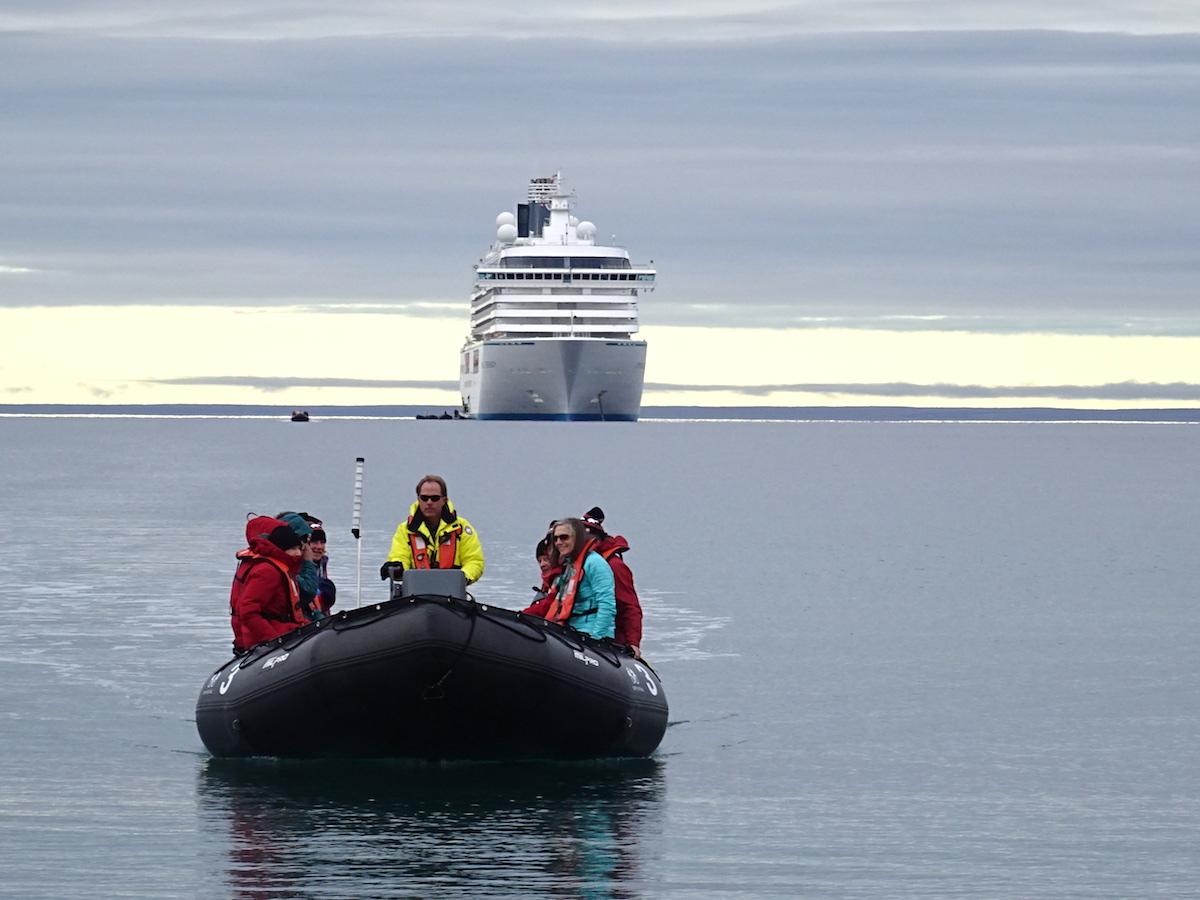Cruise ships and their passengers are headed back into Nunavut waters
12 hamlets expect cruise visits this season now that a temporary ban begun in 2020 has expired.

There’s going to be more traffic in the waters around Nunavut this summer as international cruise ships return to the territory’s shores.
They’re back after a two-year sailing ban on passenger ships and pleasure crafts in Canadian Arctic waters — put in place in March 2020 to prevent the spread of COVID-19 in the region — expired at the end of February.
Twelve hamlets are expecting passenger cruise ships to visit their communities this summer: Cambridge Bay, Cape Dorset, Clyde River, Gjoa Haven, Grise Fiord, Iqaluit, Kimmirut, Kugluktuk, Pangnirtung, Pond Inlet, Qikiqtarjuaq and Resolute Bay, according to a list from the Department of Economic Development and Transportation.
The earliest cruises are scheduled to arrive in Iqaluit and Pond Inlet this week, and the last cruises for the season will sail through the territory at the end of September.
Most communities expect one to three cruise visits, but cruise hotspot Pond Inlet is preparing to welcome 19 passenger cruise ships and at least seven private yachts, said Ernest Merkosak, manager of Nattinak Visitors Centre in Pond Inlet.
“When I first started about eight years ago, a maximum of 12 cruises came for the summer. We did a great job, all the cruise ships were affected positively by it, they spread the word, and [now] more and more cruise ships are wanting to visit.”
Pond Inlet sits at the mouth of the Northwest Passage, making it an obvious stop for ships sailing through the Arctic, Merkosak said.
The Government of Nunavut’s 2018-19 annual report on tourism said 12 cruise ships embarked on 21 separate voyages in Nunavut waters between July 2019 and September 2019. That puts the 2022 season on par with pre-pandemic ship traffic.
Visiting cruise companies will include Quark Expeditions, Adventure Canada, France-based cruise line Ponant, Norway-based Hurtigruten, Lindblad Expeditions and others.
Most cruise ships passing through Nunavut this season will have 125 to 200 passengers onboard while private yachts and pleasure crafts usually have 30 to 40 passengers, Merkosak said, although one ship from Hurtigruten has the capacity for up to 500 people.
After a hamlet grants permission for a cruise ship to visit, the visitors centre will work with the cruise line to organize local tours and cultural performances.
Visits are often brief, usually only three to five hours, and cruise ship itineraries can be very unpredictable. Poor sailing conditions, ice and weather commonly cause disruptions to sailing schedules.
“We try and be as flexible as we can,” Merkosak said.
Hosting more than 100 visitors all at once, even for just a few hours, can also be a challenge for some communities.
“There are people that are against it,” Merkosak said of cruise visits, citing some concerns he’s heard from hunters about tourists veering off designated hiking routes and disrupting hunting grounds.
“But there are some people that are encouraging more and more cruises because it’s actually helping us financially,” he said.
The GN estimated in its tourism report the economic impact of cruise visits in 2019 was $677,258, with much of that going to local artists who sell their work to tourists.
“I think the important thing to emphasize is the expedition cruise industry has been absolutely roasted by COVID,” said Alex McNeil, director of expedition experience and innovation at Quark Expeditions.
“At our company, we had zero revenue from March 2020 until earlier this year, and we are still seeing some significant financial impact.”
After a two-year absence of cruises in Nunavut, McNeil said it’s even more important for cruise lines like Quark to build up good partnerships with the hamlets that host them.
“There’s a lot of interest in nurturing more meaningful relationships with communities,” he said.
“The experience that the community has when one of our ships visits should be at least equal to the experience that the guests have. So if the guests have a great experience, and the community does not have a great experience, that’s a failed visit.”